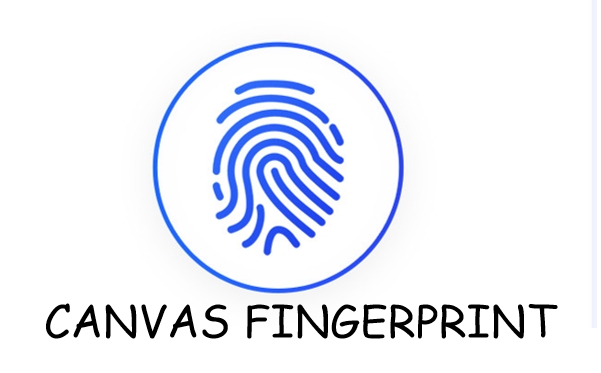In some services, it is necessary to obtain basic information of anonymous users to analyze user behaviors and then make targeted recommendations for certain user groups. This is where the Canvas fingerprint comes in.
Looking for a way to block canvas fingerprints? Trying to learn more about Canvas Defender? Then this article is for you.
In this article you will see:
- What is canvas fingerprint
- Why are Canvas fingerprints here
- What harm can canvas fingerprints do to me
- What is Canvas Defender? Does it work?
- The best alternative to Canvas Defender!
What is a Canvas fingerprint?
Every kind of browser use different image processing engine, different export option, different compression levels so that every computer draw graphics will be slightly different, these patterns can be used to assign user equipment a specific number (fingerprint), that is to say, can be used to identify different users, users won’t generally to replace hardware.
Therefore, Canvas can well specify the browser of the current user, but it is especially easy to generate the same fingerprint when multiple users have the same hardware device and browser. Therefore, canvas fingerprint cannot completely replace cookies as user identity authentication but can be used as auxiliary authentication information.
Why need to use canvas fingerprint?
In general, websites or advertising alliances want a technical way to accurately target each individual on the network. In this way, they can collect the data of these individuals and push advertisements (precision marketing) or other targeted activities more accurately through analysis. Cookie technology is a very popular one.
When a user visits a website, the site can permanently plant a unique identifier (UUID) in the user’s current browser Cookie and use this information to associate all of the user’s actions. These behaviors can be:
- What pages did you browse?
- What keywords are searched?
- What are you interested in?
- Which buttons were pressed?
- What features are used?
- What products did you see?
- What goes into the shopping cart
And so on.
As Internet users attach more importance to personal privacy, cookies are becoming less and less popular. Many security tools and even browsers are starting to allow or instruct users to turn cookies off. For example, many major browsers have a “private browsing mode” feature. This makes it harder for websites to track user behavior. However, there are still some ways for websites to track the behavior of each visitor, for example, flash cookies can also achieve the purpose of unique identification and tracking.
As HTML5 matures, identifying a unique browser via Canvas Fingerprinting is becoming more accepted. The feature of it is that users can hardly block it without cookies.
This tracking technology can track the unique feature code of the device through dynamic drawing parameters in HTML 5 and JavaScript without the permission of the user. It does not need to carry any token or accept cookies, and it can be tracked even if the IP address is changed. Therefore, it is considered to be unable to completely resist the tracking technology at the present stage.
How can Canvas fingerprints harm you?
1) Disclosure of personal privacy
Your washing machine is broken and you bought a new one online yesterday, right?
Did you play tower defense last night? Staying late?
Don’t look around, I’m not lurking, but I am. As soon as you log into the network using your device, I can see what you’re doing with that device.
Yes, I am a browser fingerprint. Canvas prints.
As mentioned before, some advertisers need the help of Canvas fingerprint to accurately find the best potential consumer groups. Your browsing behavior will be unique under Canvas fingerprint technology. While this may make ads and feeds more refined and easier for some, it also leaves users with no privacy at all.
2) Induce fraud
This point is based on the user privacy exposure caused by criminal acts.
When your browsing tendencies and browsing history are exposed to criminals, they can easily use these characteristics to determine your preferences and send you highly matched false messages. When this information gets your attention, fraud is easy to occur.
3) Impeding business activities
Why would Canvas fingerprints get in the way of business? Isn’t it just a threat to our privacy?
Yes, when Canvas fingerprints can tell you who you are, your business will be hindered a lot. Because it’s probably associated with the account.
What is account association? This rule generally applies to platforms that limit multiple accounts. Some platforms pay attention to the browsing environment and user experience and are very opposed to a user to achieve their own business marketing purposes to create and manage multiple accounts. In order to control this phenomenon, the platform tries to determine whether an account is connected or not.
When many different accounts have very similar operation behaviors, the platform will judge that there is a connection, leading to the closure of the account.
Canvas fingerprints can distinguish individual characteristics, thus playing an irreplaceable role.
What is Canvas Defender
Canvas Defender is a free add-on for Firefox and Chrome that manipulates Canvas fingerprints to prevent Canvas fingerprints.
Canvas fingerprints use the HTML5 Canvas element. The Canvas element is used to draw graphics on Web pages and is supported by all major Web browsers.
Fingerprints take advantage of the fact that the output of a canvas is often different when rendered in different browsers. This is not always the case, which is why Canvas fingerprinting is often used in conjunction with other tracing methods.
In general, the more unique the browser and operating system, the more unique the fingerprint.
Canvas Defender is available on all browsers and platforms (Windows, Linux, and Mac).
How does Canvas Defender work?
Internet users have two options when it comes to blocking fingerprinting. Add-ons may block the Canvas element in the browser entirely or provide whitelisting/blacklisting methods. Since Canvas requires JavaScript, turning it off will also block it, but this is usually not feasible.
Canvas Defender changes its “real” Canvas fingerprint by adding interference to the browser.
Unlike other add-ins created for this purpose, the browser extension does not completely block the Canvas element in the browser. Canvas is also used on legitimate sites, and blocking Canvas entirely may disable some or all of those sites’ functionality.
This extension adds ICONS to the browser’s main toolbar that you can interact with. Clicking will display the interference hash, along with the option to generate a new interference. You can also disable creation at any time using the menu.
Does Canvas Defender work?
What’s the response to Canvas Defender’s launch? Does Canvas Defender work? Does it really deliver what it promises?
Some users highly recommend using this product:
5 star! Works perfectly, tested using https://www.deviceinfo.me and it does in fact show “spoofed” instead of “blocked”.
Works as expected, easy to use: install and forget. Been using it for months, don’t plan to stop using it..
However, some users say Canvas Defender still has some problems.
Some websites just don’t work with this addon enabled. The notification is annoying and the reasons dev gives for keeping it that way are not justified.
While the idea is nice theoretically, practically this addon isn’t all that useful. Apps using canvas for legitimate reasons (i.e. WhatsApp web file upload, draw.io file export) will often have coloured tint (or sometimes it will just break the app completely) on them, which not only affects the web experience, but will also make you trackable. The addon does have a white-list function, but I haven’t been able to get it to work. There’s also an annoying notification that pops up on every webpage that tries to read your canvas hash and you can’t actually disable it.
The best alternative to Canvas Defender!
There are alternatives to using Canvas Defender for fingerprint protection, such as a plugin or a browser with special features.
Canvas Blocker for Google Chrome and CanvasFingerprintBlock are designed to block web pages from tracking fingerprints, so if you’re not too security-sensitive, you can try them out.
If you use a privacy-protected browser, your canvas fingerprint problem can be solved easily.
ClonBrowser is a virtual browser with high privacy protection. In ClonBrowser, your real browser fingerprints are not retrieved, they are retrieved as a fake mask fingerprint. With measures like Canvas Spoofing, you don’t have to worry about fingerprints anymore!
In addition, your personal data, such as cookies, will also be kept independently.
Come and try it for free!




 Jolian
Jolian December 3,2021
December 3,2021



